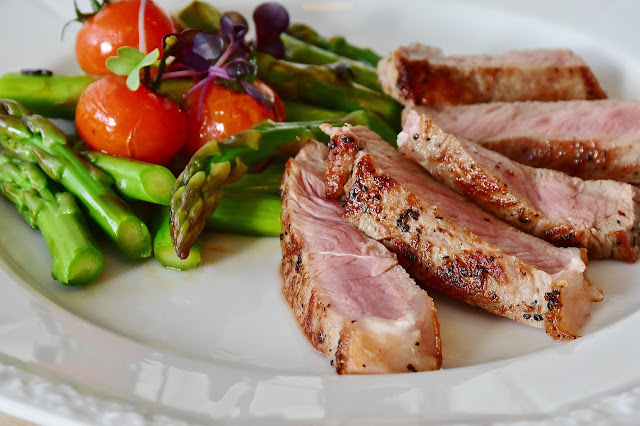 |
keto diet -What everybody ought to know
keto diet (often referred to as the ketogenic diet) is a
high-fat, low-carbohydrate food that has been used to help people lose weight
and improve certain health conditions. The idea behind the meals plan is to
enter a state of ketosis, where it burns stored fat for energy instead of
glucose from carbohydrates.
The main goal of the keto diet is to force the body to burn
fat for energy, instead of carbohydrates. When carbohydrates are limited, the
body produces ketones, which are molecules that are used as an alternative
source of energy.
The keto diet typically involves consuming 70-80% of
calories from fat, 10-20% from protein, and only 5-10% from carbohydrates. This
macronutrient distribution is intended to cause the body to enter a state of
ketosis, where it produces ketones from stored fat as an alternative source of
fuel.
Carbohydrates
The ketogenic diet restricts carbohydrate
intake to 20-50 grams per day. This means that most starchy and sugary foods
are eliminated or limited, including grains, bread, pasta, rice, potatoes,
fruits, and sweets. Instead, the diet focuses on non-starchy vegetables, such
as leafy greens, broccoli, cauliflower, and asparagus, which are low in carbs.
High Fat
The ketogenic diet is a high-fat diet, with 70-75% of
calories coming from fat sources. This includes healthy fats, such as olive
oil, avocado oil, coconut oil, nuts, seeds, and fatty fish. Saturated and trans
fats should be limited.
Protein
The ketogenic diet is a moderate-protein food, with
20-25% of calories coming from protein sources. This includes meat, poultry,
fish, eggs, and dairy products. However, protein intake should not be too high,
as excess protein can be converted into glucose, which can interfere with ketosis.
Ketosis
The main goal of this dietary regime is to induce a state of ketosis, where the body burns fat for fuel instead of carbohydrates. This is achieved by restricting carbohydrate intake and increasing fat intake, which prompts the liver to produce ketones from stored fat. Ketones can be used by the brain and body as an alternative fuel source.
 |
| ketogenic diet |
Potential benefits of
this dietary meal plan include weight loss, improved blood sugar control, and
improved cholesterol and blood pressure levels. However, this low carb meals
plan can be challenging to follow, as it requires strict adherence to the
macronutrient distribution and can be difficult to maintain long-term and may
not be appropriate for everyone, particularly those with certain medical
conditions.
Foods that are typically allowed on the dietary program include
meat, fish, eggs, dairy products, nuts, seeds, non-starchy vegetables, and
healthy fats such as olive oil and avocado. Foods that are typically restricted
or avoided on the meals include grains, sugar, fruit, and starchy vegetables
such as potatoes and corn.
If you are considering the keto diet, it is important to
speak with a healthcare professional to determine if it is appropriate for you
and to receive guidance on how to safely and effectively follow the menu.










0 Comments